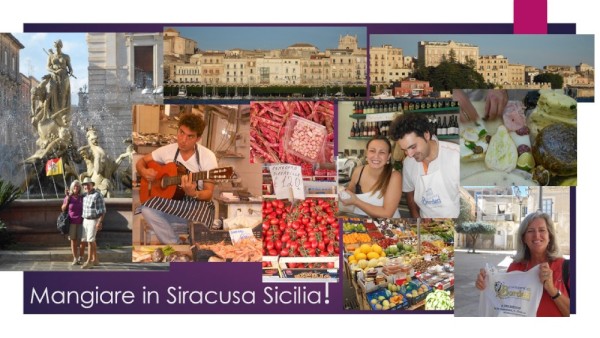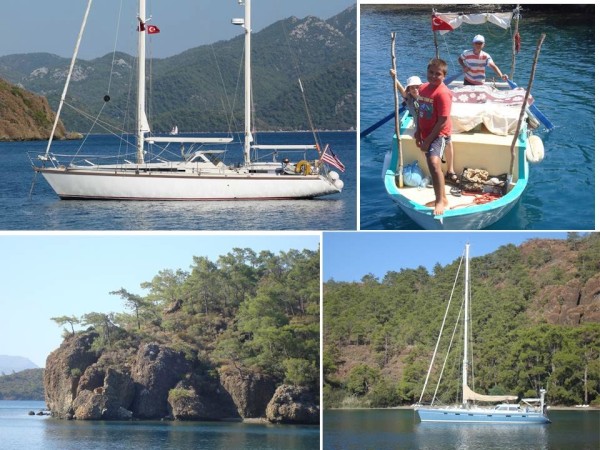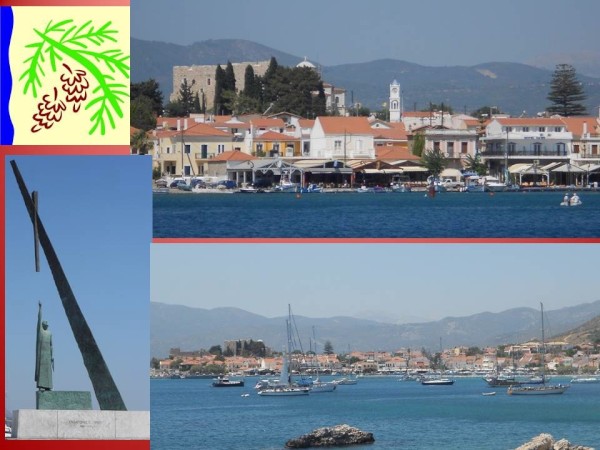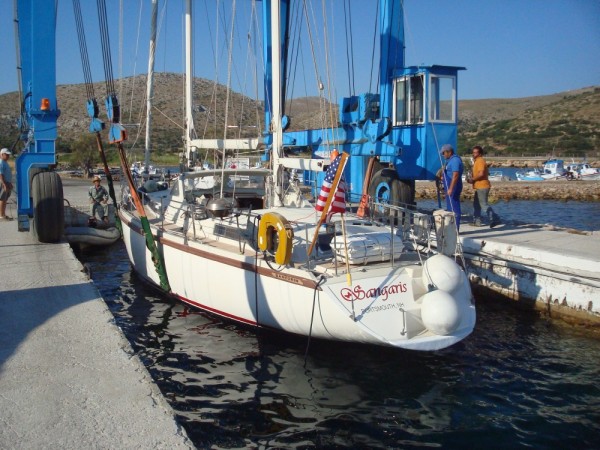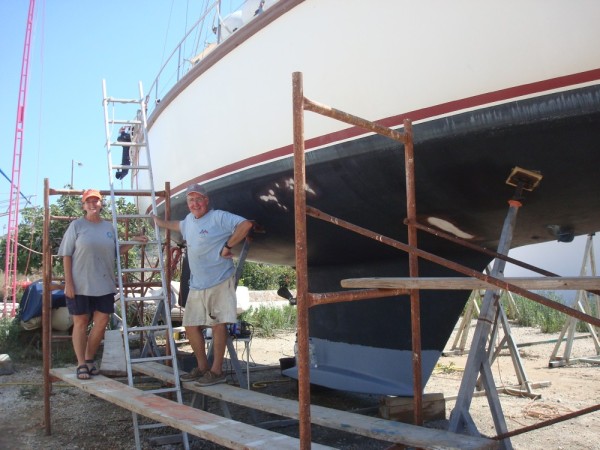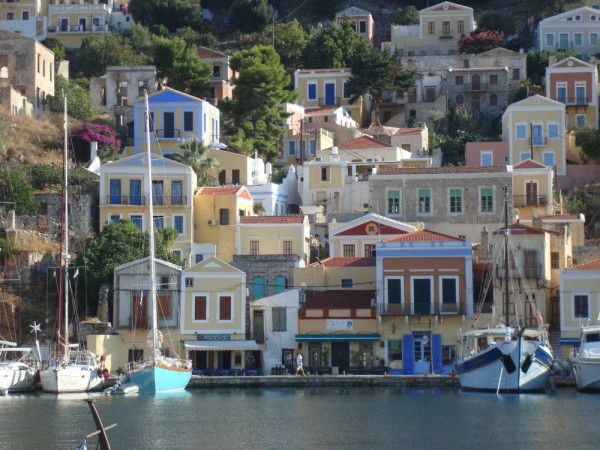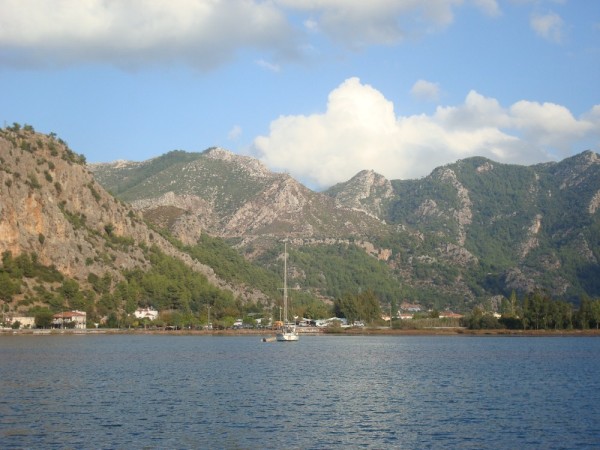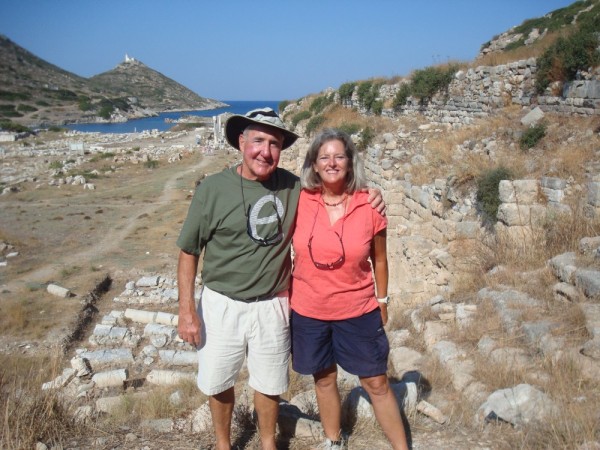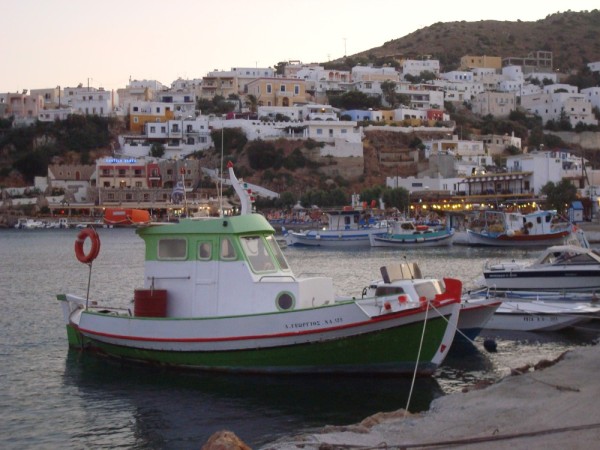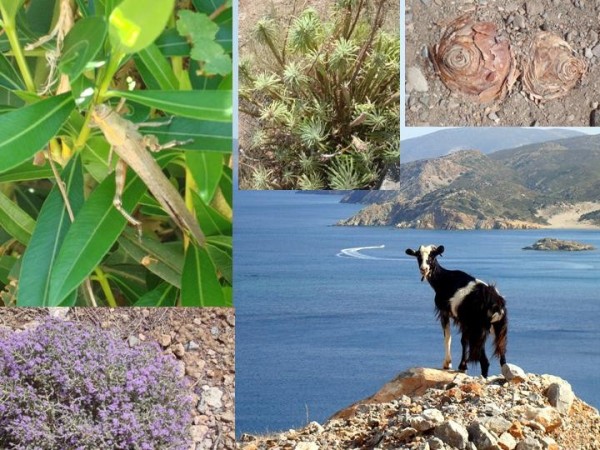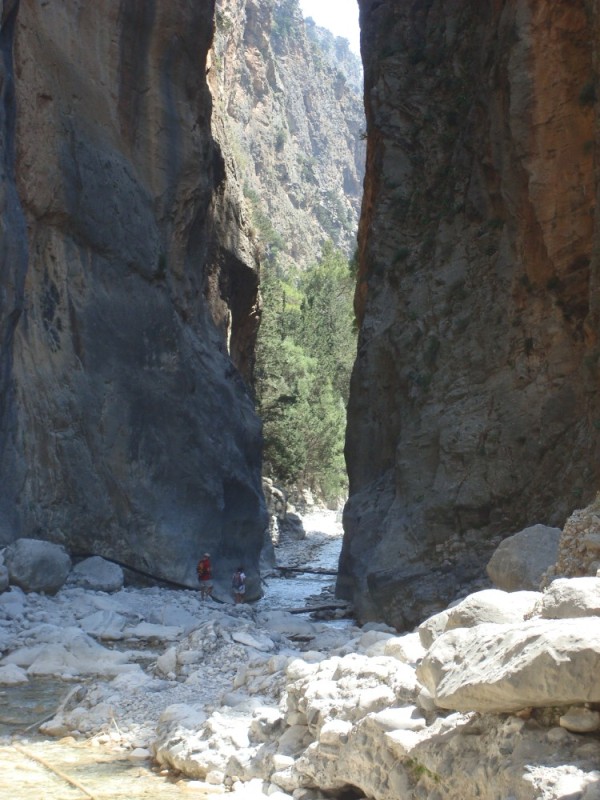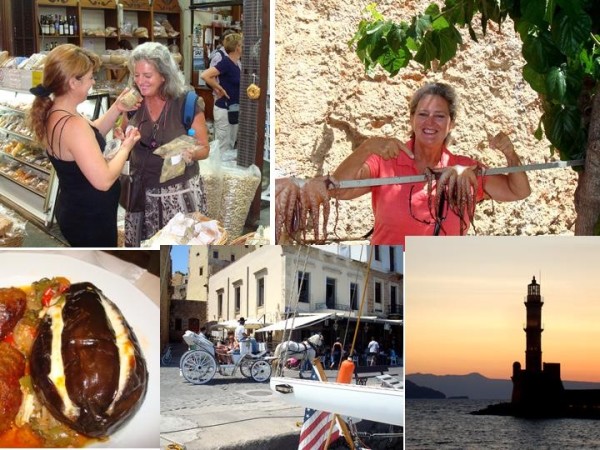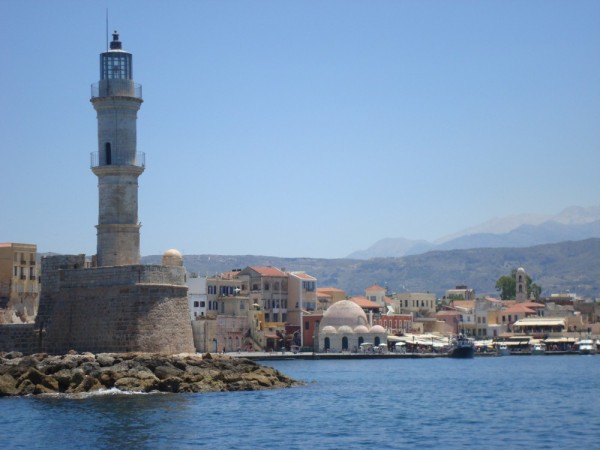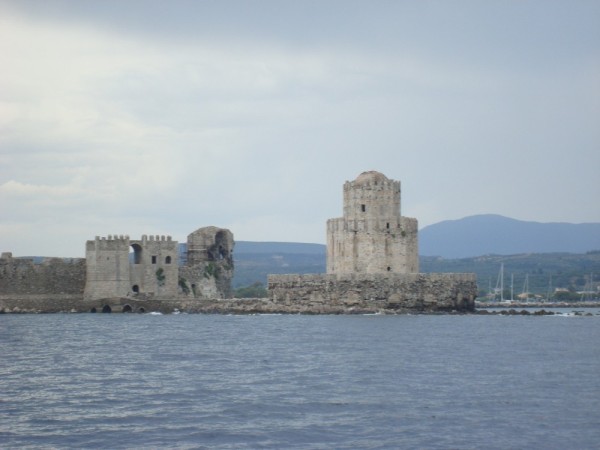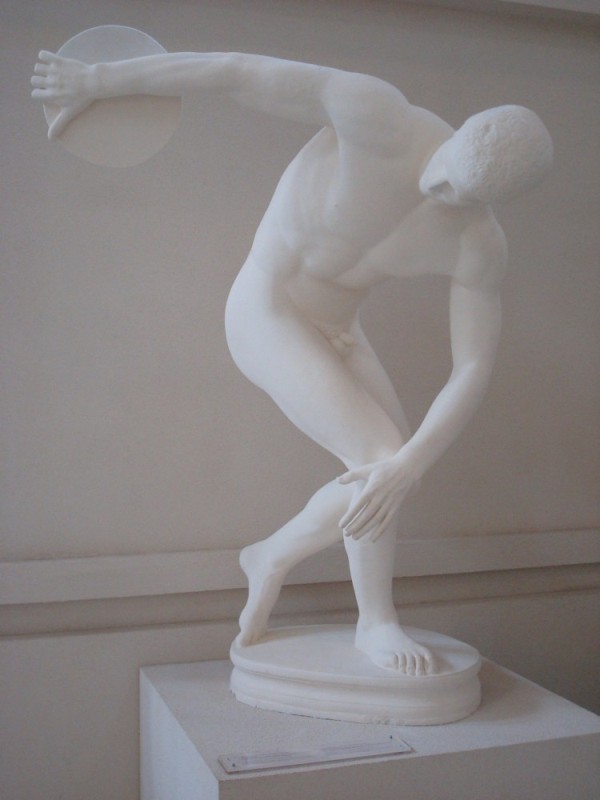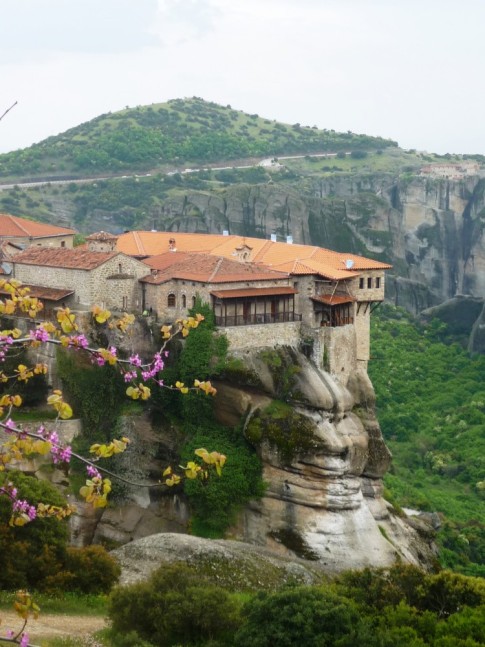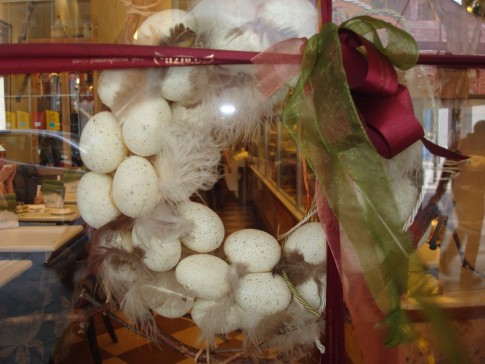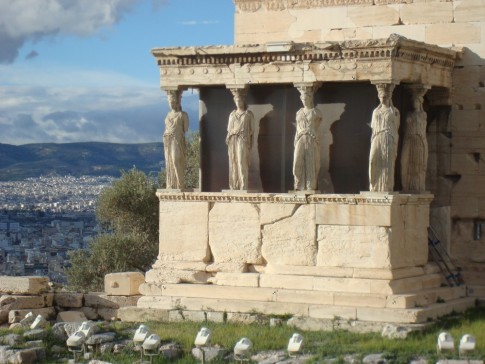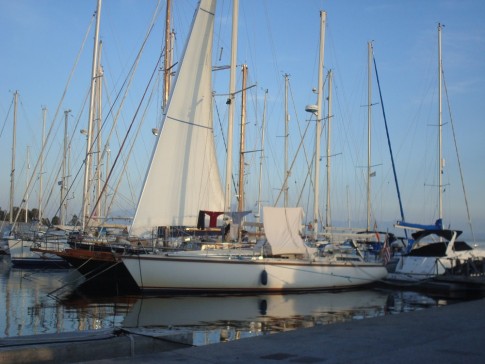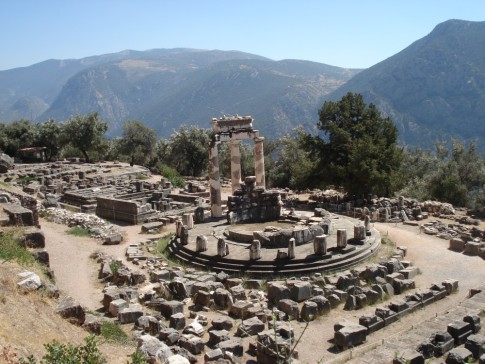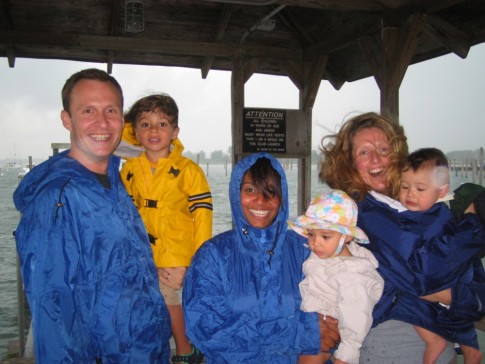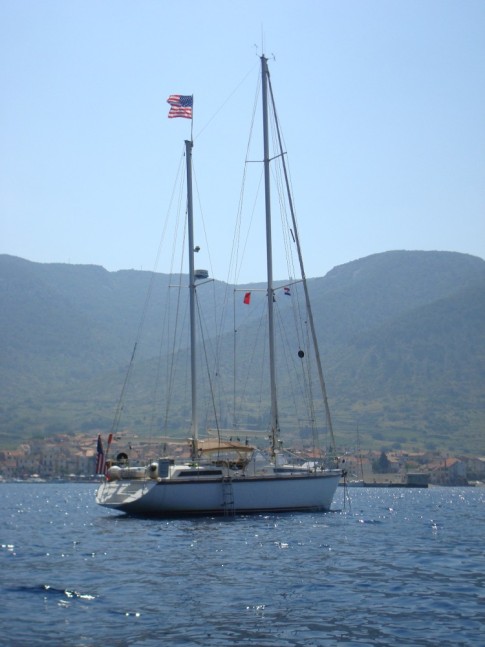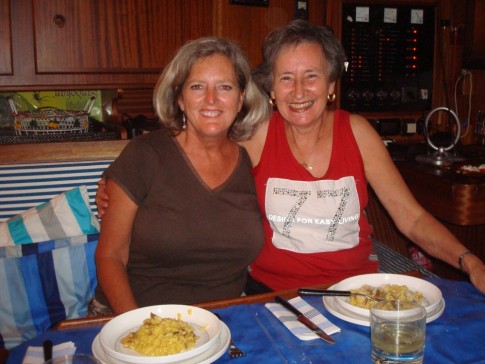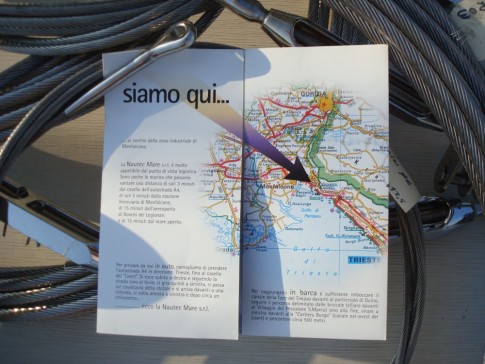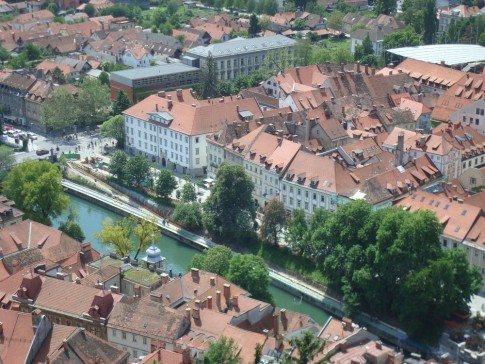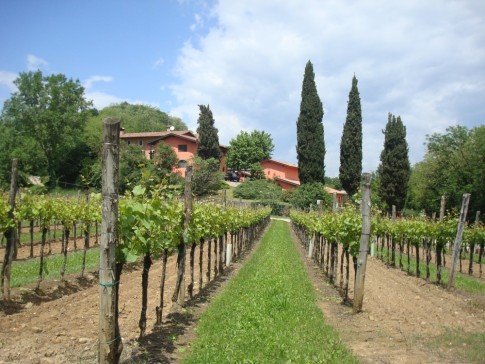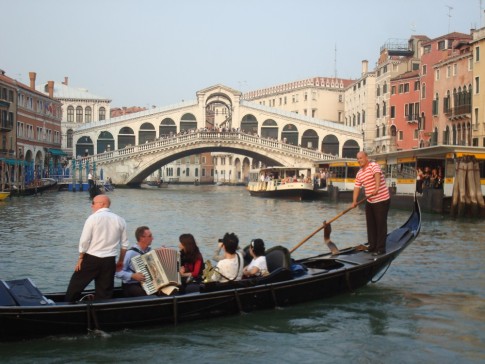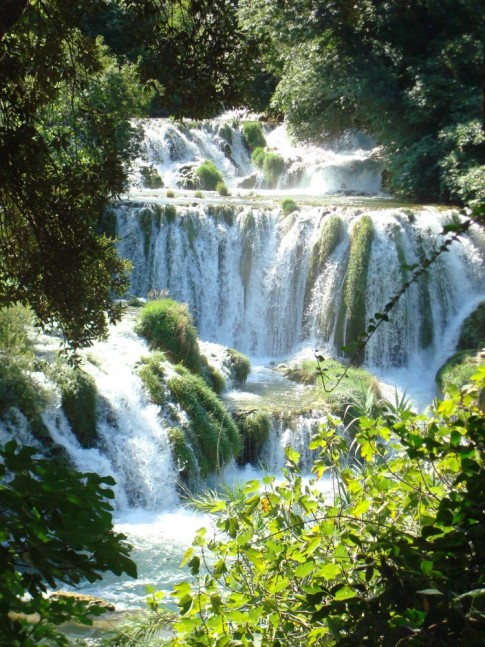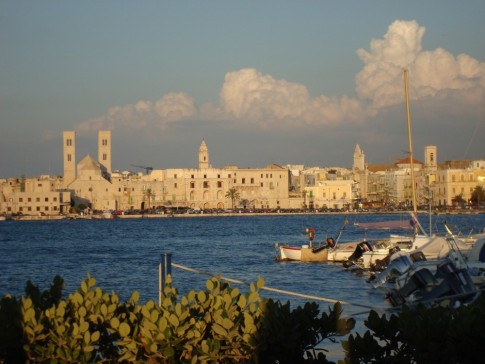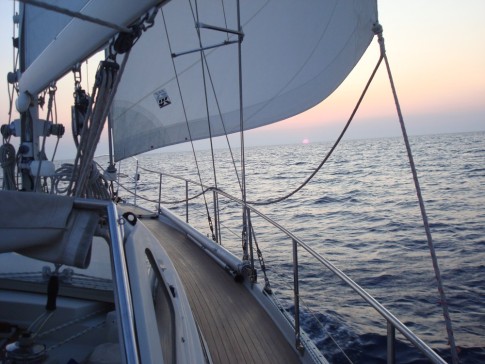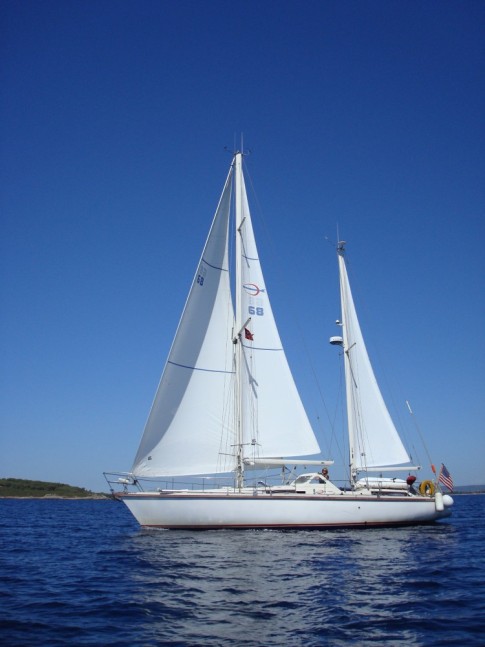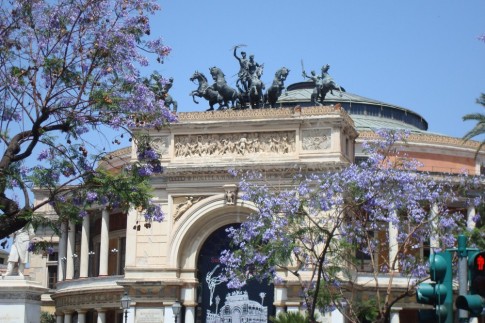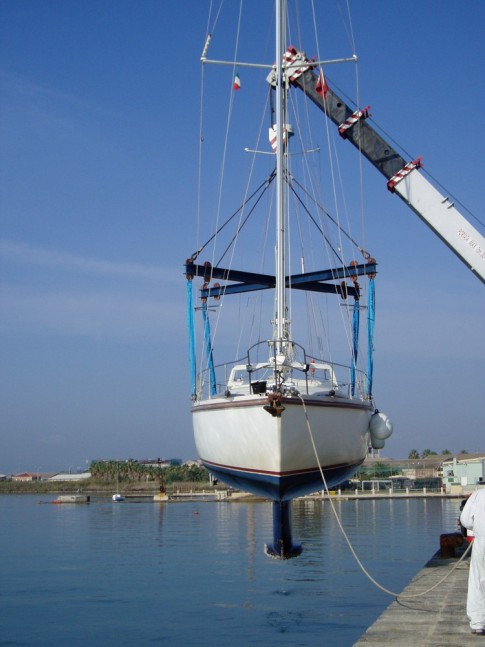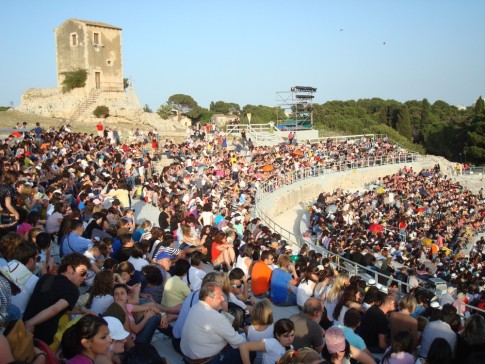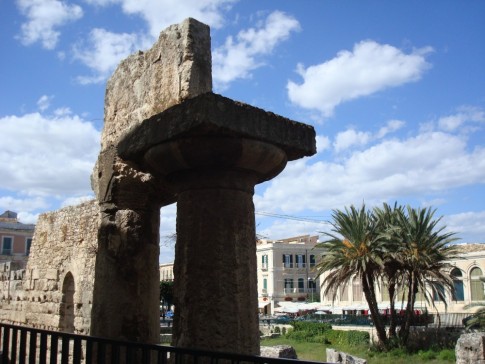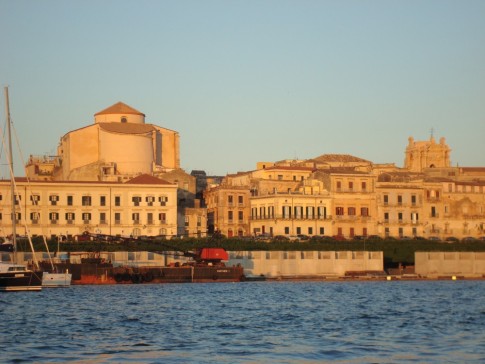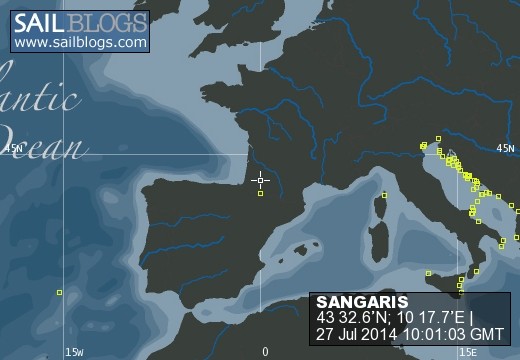
SANGARIS
2014 Log: Italy & Islands
27 July 2014
25 July 2014
18 July 2014
18 July 2014
06 July 2014 | Trapani, Sicily
02 July 2014 | Ragusa to Trapani, Sicily
21 June 2014 | San Vito lo Capo, Sicily
05 June 2014
04 June 2014 | Padova and Venice
03 June 2014 | Marina di Ragusa, Italy
24 September 2013
01 September 2013
31 August 2013
29 August 2013
13 August 2013
27 July 2013
25 July 2013 | (In 200 BC, that is!)
24 July 2013 | Samos, Greece
24 July 2013
EPHESUS - 3rd Largest City in the World !
25 July 2013 | (In 200 BC, that is!)
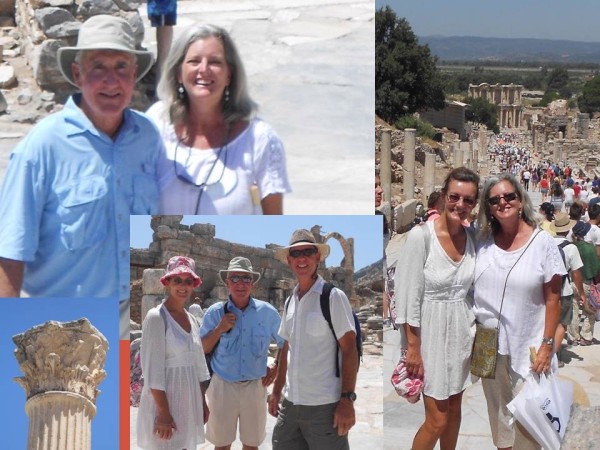 Having reconnected with the Deep Blue Crew in Samos, we left the boats safely Med-moored to the Pythagorio town quay and booked a day-trip to Ephesus, by way of a ferry to Kuşadasi and tour bus to the site (see Cruisers' Notes below).
Having reconnected with the Deep Blue Crew in Samos, we left the boats safely Med-moored to the Pythagorio town quay and booked a day-trip to Ephesus, by way of a ferry to Kuşadasi and tour bus to the site (see Cruisers' Notes below). So, above right are the girls with the main street laid out behind them - a colonnaded walkway with the Roman Library of Celsus at the bottom. Mind you, this was the 3rd largest city in the World, behind Rome and Alexandria. Sandra, Craig and Chris are posed in front of the Temple of Artemis, one of the Seven Wonders of the Ancient World.
Pop quiz: is that column? Doric, Ionian or Corinthian? First one to post the right answer as a comment wins a week aboard Sangaris (flight, food and drink optional extras.)
 The above pic gives a perspective of the city location - all that valley in the background was open Mediterranean Sea and Ephesus owed its success to being a seaport. Over the centuries, though, the river that ran to the sea silted in, much like, say, the Mississippi delta, and the city was no longer viable.
The above pic gives a perspective of the city location - all that valley in the background was open Mediterranean Sea and Ephesus owed its success to being a seaport. Over the centuries, though, the river that ran to the sea silted in, much like, say, the Mississippi delta, and the city was no longer viable.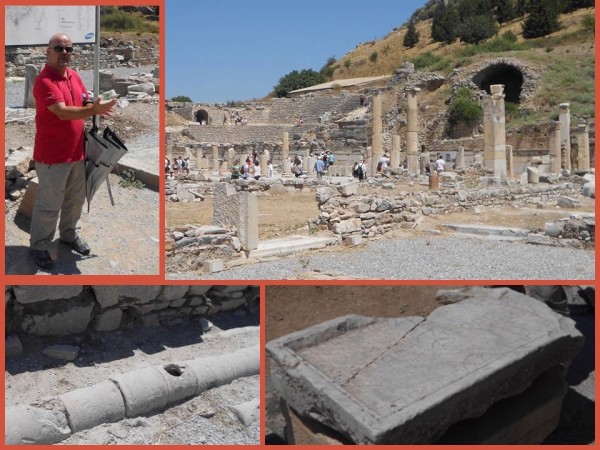 Here's our tour guide - an affable Turkish fellow who works as an archaeologist in the winter and a guide during summers - very knowledgeable, indeed. Top right is a section of the excavated ruins - the theater-looking structure was actually the government center where issues of the day were debated. The cave or tunnel bit on the hill is actually a temporary structure they've built to stabilize another vast section that will be excavated in the future, when funding permits. This was one HUGE town!
Here's our tour guide - an affable Turkish fellow who works as an archaeologist in the winter and a guide during summers - very knowledgeable, indeed. Top right is a section of the excavated ruins - the theater-looking structure was actually the government center where issues of the day were debated. The cave or tunnel bit on the hill is actually a temporary structure they've built to stabilize another vast section that will be excavated in the future, when funding permits. This was one HUGE town!Bottom left is some of the original infrastructure of clay (terracotta) water pipes that are "in situ", as they were 2500 years ago. And bottom right is one of many public carved backgammon boards which were a mainstay of entertainment.
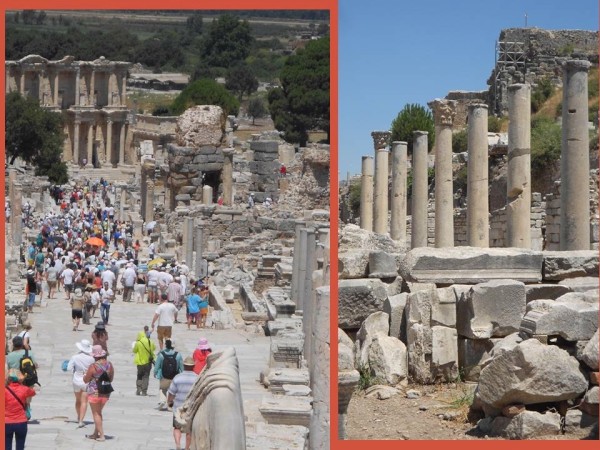 Here's the Main Street again, further down toward the library with the columns that formed the covered walkway to the right - a posh place indeed. And well-engineered, too, as buried beneath tha street was the main sewer line of the city, running out to sea.
Here's the Main Street again, further down toward the library with the columns that formed the covered walkway to the right - a posh place indeed. And well-engineered, too, as buried beneath tha street was the main sewer line of the city, running out to sea. 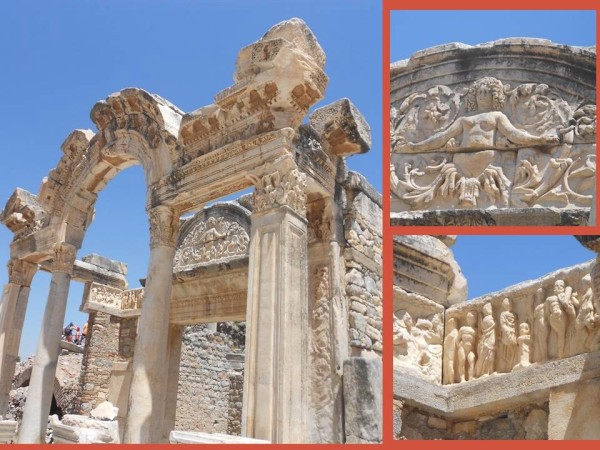 "Hey Hadrian! It's 123AD and you've been one heck of an Excellent Emperor for 6 years now, so we built you a Temple to honor your upcoming visit. We got our best stone carvers to chink out those details on the right. Y'all have a great time now!" (Of course, you've got to give that a classical Greek lilt.)
"Hey Hadrian! It's 123AD and you've been one heck of an Excellent Emperor for 6 years now, so we built you a Temple to honor your upcoming visit. We got our best stone carvers to chink out those details on the right. Y'all have a great time now!" (Of course, you've got to give that a classical Greek lilt.)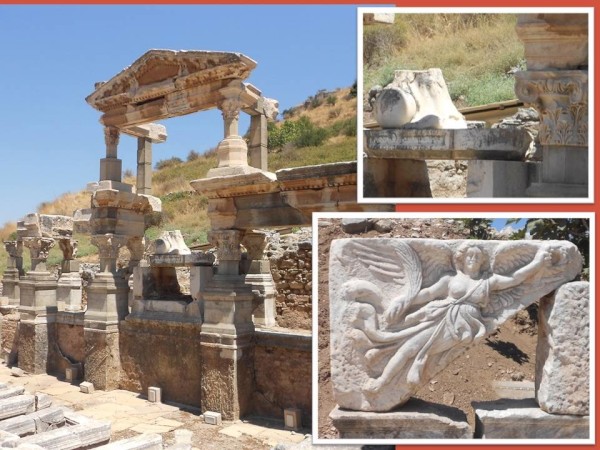 The Nymphaeum Traiani on the left was actually the pool at the end of a 25 mile aquaduct bring fresh water into the city. It was donated by wealthy locals to honor Artemis, Apollo's twin sister. The structure on top was a recent recreation to give us an idea of the original, but that was about 3 times higher, as you can tell from the close-up of the foot of one of the statues that was under the roof.
The Nymphaeum Traiani on the left was actually the pool at the end of a 25 mile aquaduct bring fresh water into the city. It was donated by wealthy locals to honor Artemis, Apollo's twin sister. The structure on top was a recent recreation to give us an idea of the original, but that was about 3 times higher, as you can tell from the close-up of the foot of one of the statues that was under the roof. Across from this is a relief of Nike (bottom right) which our guide said is actually pronounced Nick-ee, not Nike-ee like the modern shoes. She was the goddess of victory.
 Having now made our way down the main street, we arrive at the Roman Library of Celsus (not to be confused with Celsius, the temperature guy). Completed in 120AD it was once the repository of some 12,000 books (scrolls, actually) that were all lost to earthquake and fire in 262. Across the first level you see there were four statues with a close-up of one inset. These are replicas, but give you a good idea of the original. And what better place for a cat-nap than under a Corinthian capital. (That's a hint for the Pop Quiz, btw.)
Having now made our way down the main street, we arrive at the Roman Library of Celsus (not to be confused with Celsius, the temperature guy). Completed in 120AD it was once the repository of some 12,000 books (scrolls, actually) that were all lost to earthquake and fire in 262. Across the first level you see there were four statues with a close-up of one inset. These are replicas, but give you a good idea of the original. And what better place for a cat-nap than under a Corinthian capital. (That's a hint for the Pop Quiz, btw.)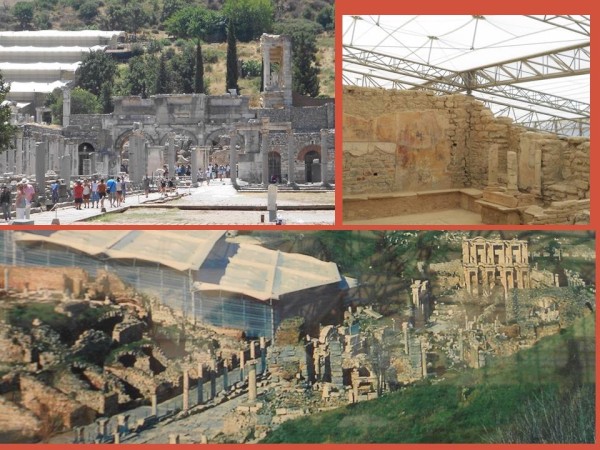 From the main street you can see a covered section of the ruins that preserves the "Terrace Houses". These were occupied by the very wealthy and contain the largest complex of mosaic floor décor from the Roman imperial period in all of Western Turkey. At top left is some of the structural covering with wall paintings visible and the bottom is a display picture of the earliest covering efforts.
From the main street you can see a covered section of the ruins that preserves the "Terrace Houses". These were occupied by the very wealthy and contain the largest complex of mosaic floor décor from the Roman imperial period in all of Western Turkey. At top left is some of the structural covering with wall paintings visible and the bottom is a display picture of the earliest covering efforts. This montage is pretty much self explanatory as work proceeds to restore the vast mosaics that were on both the floors and the walls - the fellow in the bottom left is painstakingly preserving some wall paintings. You can see how ornate the residences were from the beautiful columns in the living spaces.
This montage is pretty much self explanatory as work proceeds to restore the vast mosaics that were on both the floors and the walls - the fellow in the bottom left is painstakingly preserving some wall paintings. You can see how ornate the residences were from the beautiful columns in the living spaces. As we climbed up the stairways in the protective structure, dozens upon dozens of rooms with columns, mosaics and paintings became visible - complete with good explanations along the way like that Chris and Sandra are perusing.
As we climbed up the stairways in the protective structure, dozens upon dozens of rooms with columns, mosaics and paintings became visible - complete with good explanations along the way like that Chris and Sandra are perusing. 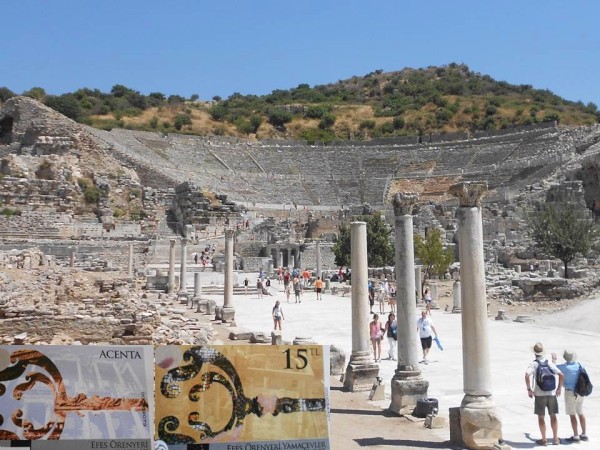 Finally you make your way all the way down through the city and exit past the immense Theater that sat some 25,000. It was located near the waterfront and built during the Hellenistic period and then enlarged during the Roman era. Until just a few years ago it was used for modern rock and music concerts, but that's now stopped for fear of damage from over-exuberant fans. We left with our souvenir tickets of the city and the Terrace Houses as a reminder of an amazing day visiting antiquity.
Finally you make your way all the way down through the city and exit past the immense Theater that sat some 25,000. It was located near the waterfront and built during the Hellenistic period and then enlarged during the Roman era. Until just a few years ago it was used for modern rock and music concerts, but that's now stopped for fear of damage from over-exuberant fans. We left with our souvenir tickets of the city and the Terrace Houses as a reminder of an amazing day visiting antiquity.Cruisers' Notes:
We had excellent service from "By Ship" Travel in Pythagorios Town, who arranged all our transportation and tour guide who worked directly with the Kusadasi based "Meander" Travel company,. Price was 38€ RT per person for ferry to Kuşadasi plus a 10€ pp port fee upon arrival. The bus to Ephesus, entry to the city and a guided tour was 20€ pp. The Terrace House was an extra 15TL ($7) and we think this optional touring was well worth the separate admission fee . Obviously, from the pictures, we were not alone at the site - they get upwards of 10000 visitors on a good day - but it's a huge city and doesn't seem all that crowded.
Comments
| Vessel Name: | SANGARIS |
| Vessel Make/Model: | Amel Santorin - a 46'/14m Ketch |
| Crew: | Katherine and Craig Briggs |
| About: |
SANGARIS's Photos - Main
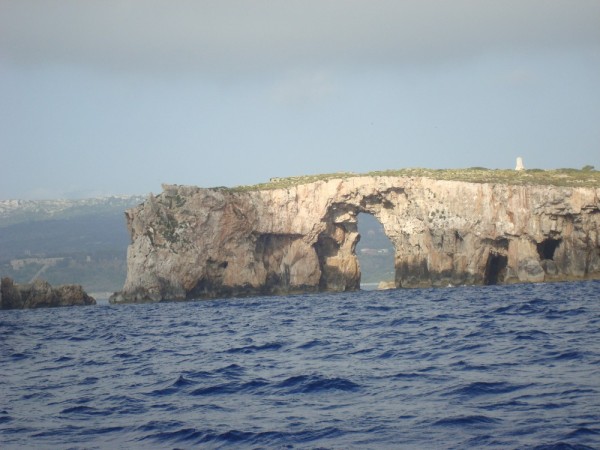 |
Anchored in Navarinou Bay and free marina in town - walks to castle, bay north, Nestor's Cave and Giavola Lagoon.
25 Photos
Created 23 June 2011
|
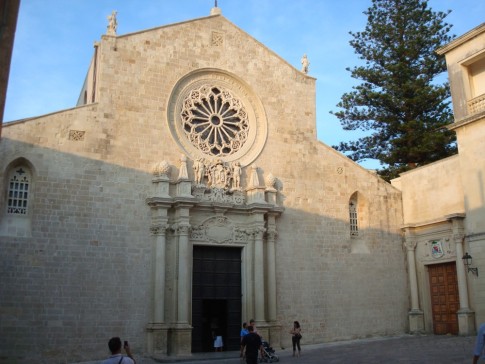 |
Otranto's Aragonese castle and Romanesque Cathedral with 12th C Floor Mosaic
8 Photos
Created 14 July 2009
|
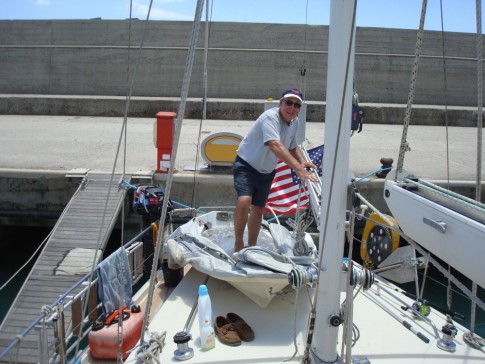 |
Wash-down at the marina and a day trip to the hillside village of Stignano in search of a friend's ancestral roots
12 Photos
Created 13 July 2009
|
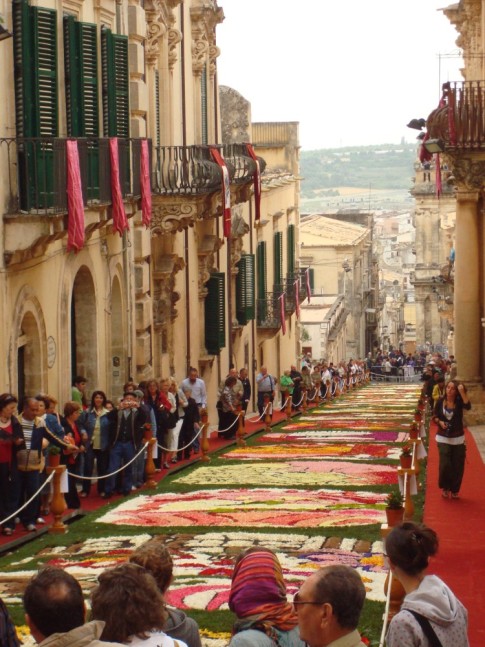 |
"Infiorata" Flower Petal Art Competition and Noto's Baroque Architecture
10 Photos
Created 12 July 2009
|
s/v SANGARIS

Who: Katherine and Craig Briggs
Contents
Good Links!
- Turkey & Greece to Itlay 2013
- Greece & Turkey 2012
- Greece 2011
- Croatia 2010
- Greece 2010
- Montenegro & Albania 2010
- Italy 2010
- Venice 2009
- Croatia 2009
- Ciao Sicilia! 2009
- Seven Seas Cruising Association
- Best decorator in town!
- Best B&B on the Intracoastal (in Wilmington, NC)
- Best Cruiser's Mail Service
- Amel Owners Group
